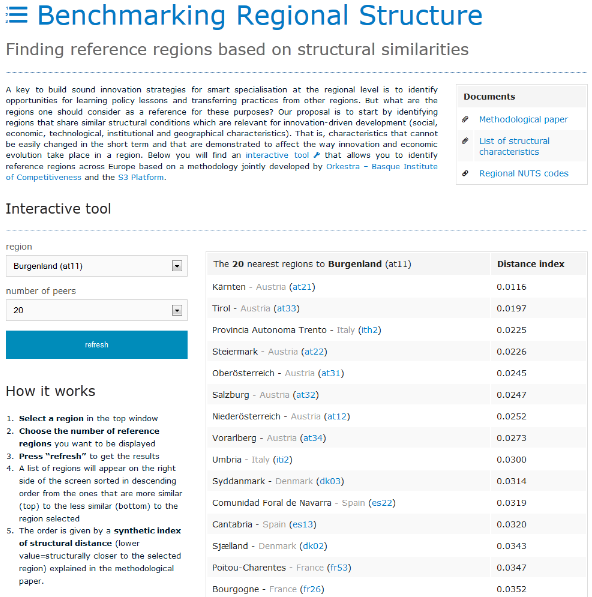
A key to build sound innovation strategies for smart specialisation at the regional level is to identify opportunities for learning policy lessons and transferring practices from other regions. But what are the regions one should consider as a reference for these purposes and how can we identify them? These are fundamental questions at the foundation of any policy learning process or benchmarking exercise.
Reference regions share similar structural conditions relevant for innovation-driven development. That is, characteristics that cannot be easily changed in the short term and that are demonstrated to affect the way innovation and economic evolution take place in a region. Looking at regions with similar structures in terms of social, economic, technological, institutional and geographical characteristics makes it easier to understand what policies and practices can effectively be transferred and what effects they could have on a similar region. Of course, structurally similar regions may be either better or worse in terms of performance, economic success, and innovation outcome. The comparison is not based on performance nor it is aimed to select "best performers" as peers. The idea is rather that (i) policy learning is most likely to be effective if and only if your peers are similar to you, and (ii) you can learn both from others' successes and failures, provided that peers are sufficiently similar to you.
Structural similarity is evaluated on the basis of 42 variables representing socio-demographic characteristics, sectoral structure, technological specialisation, economic openness and outward linkages, business size, type and quality of institutions, social and entrepreneurial attitudes, human capital. The variables are composed into a synthetic index that provides a unique measure of structural "distance" between regions.
The interactive tool generates a list of regions sorted in descending order from the ones that are more similar (top) to the less similar (bottom) to a given region previously selected. The order is given by the structural distance index (lower value=structurally closer to the selected region).
